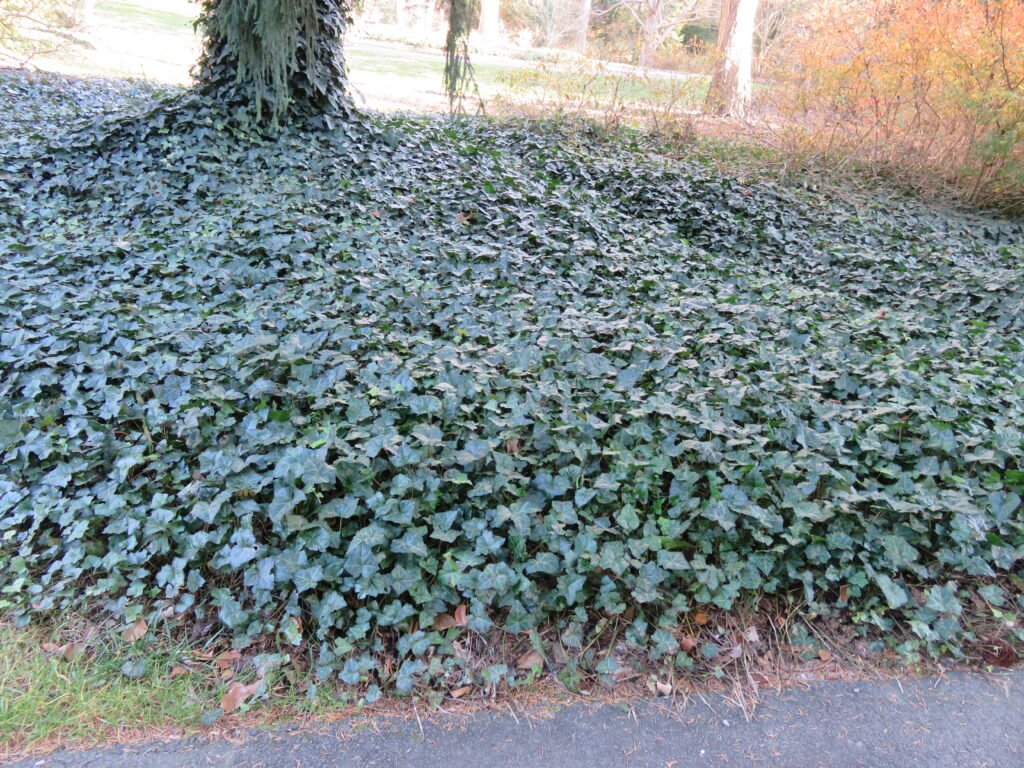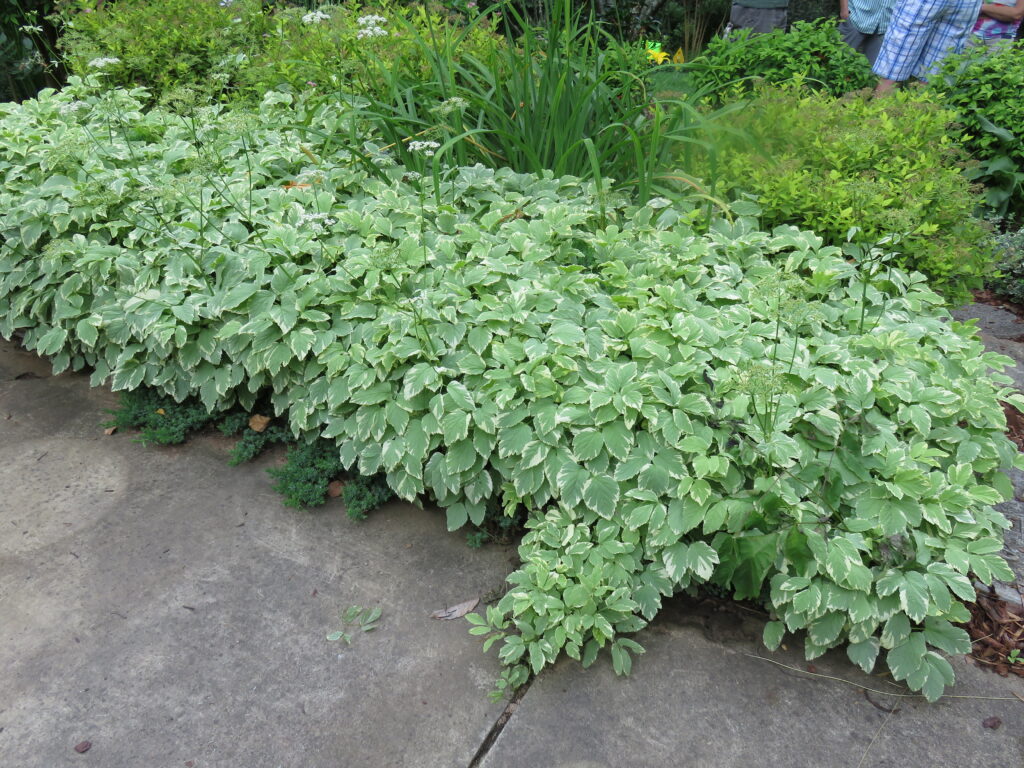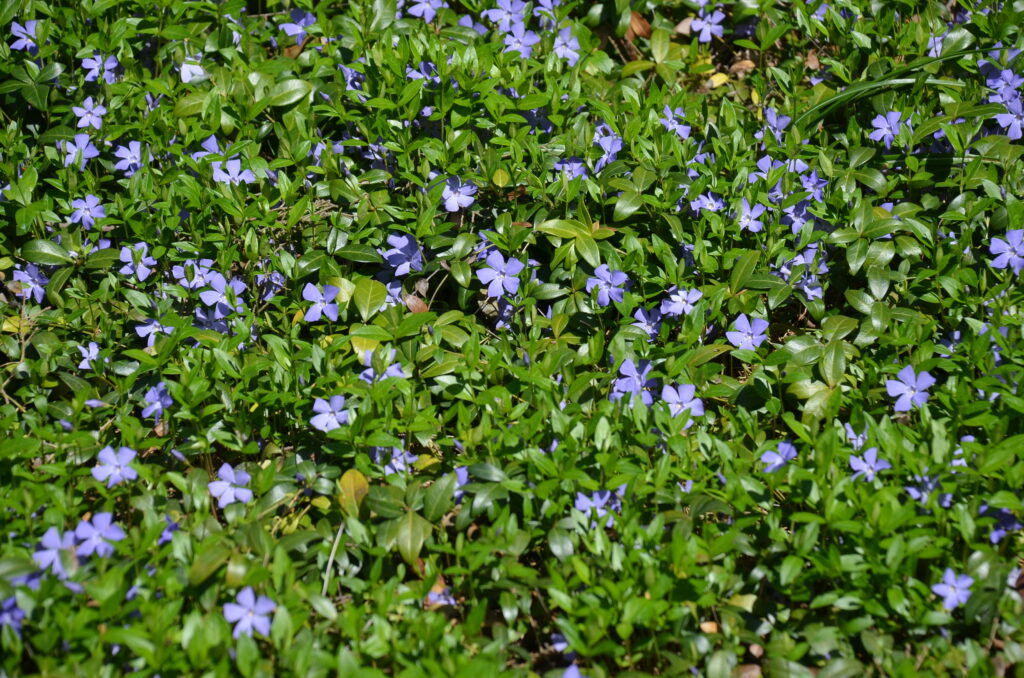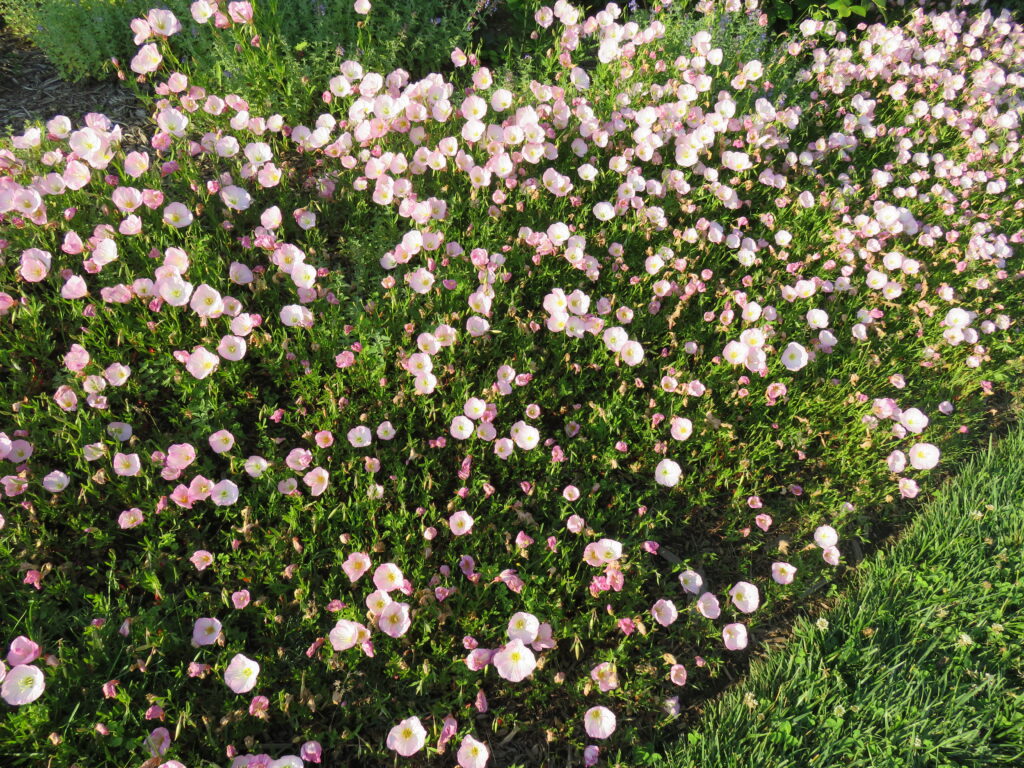Initially, these 5 groundcovers were alluringly beautiful. But, over time, each grow very aggressively and become a major chore to restrained in the garden. Several states have declared one or more species as invasive and ban them for sale and interstate transportation.

- Purple Wintercreeper (Euonymus fortunei ‘Coloratus’, also known as Euonymus fortunei var. radicans, Euonymus radicans, Euonymus japonicus var. coloratus) and others. Purple Wintercreeper, is a very well-known ground cover. This trailing vine grows 12-18 inches tall and 24-36 inches in spread. The two-inch long leaves are glossy, ovate to elliptic, dark green (above) and purplish-red beneath). Leaves turn purplish red in fall and winter. Euonymus prefers moist, well-drained soil conditions in partial shade. (Zones 5 to 9).
- Bishop’s Weed, Goutweed (Aegopodium podagraria variegatum) is an aggressive plant that forms dense patches via long, white, and spreading rhizomes. Goutweed grows in many areas of the U.S. and becomes a high maintenance weed. Growth-wise, the cultivar ‘Variegatum’ has basal light green foliage with creamy white margins. While rated as less aggressive than the species, plants may revert back to the green leaves with greater vigor. Foliage of variegated goutweed will burn in full sun. (Zones 3-10).
- Evening primrose (Oenothera speciosa), aka Mexican primrose or Showy Ladies, blooms in the evening hours. Most garden shops do not sell it and have become a pass-a long between other green hobbiests. Flowers usually remain open thru late morning. The 1.5 – 2-inch-long seed capsules follow. By late summer the plant(s) have disappeared from their garden spots. Some seeds and underground runners return the next spring. (Zones 4-9). NOTE- As a North American native species, does not qualify as an invasive plant.
- English Ivy (Hedera helix) is a high-climbing, evergreen vine available in many varieties at garden centers. English ivy is a common house plant. It has become an invasive garden plant in many areas of the U.S. Most varieties are aggressive groundcovers that grow in a wide range of sun or shade conditions. Some are meek and don’t attempt to take over. Ivy vines invade and spread into native forests and smothers tall trees and low growing native plants on the forest floor. Similarly, they rapidly cover trellises, walls, fences, trees, or any structure that they encounter. (Zones 4-13)
- Creeping myrtle (Vinca minor), aka common periwinkle, is an aggressive low maintenance ground cover that excels in shady landscape areas. This low-spreading plant. grows vigorously in woodsy areas and into shady lawns. (Zones 4-9). Equally invasive is its large leaf cousin, Vinca major, but not as winter hardy in zones 7-9.


The most effective way to eliminate these aggressive groundcovers is to cut plants to the ground after they have fully leaved out in the spring, and next blanket the ground with black plastic or heavy cardboard. This will prevent photosynthesizing, essentially depleting their carbohydrate reserves. An alternative method is to overspray young foliage or cut stems/vines containing the ingredient glyphosate (Roundup™ and other labels) or Triclopyr (Garlon™).


 Posted in
Posted in 
